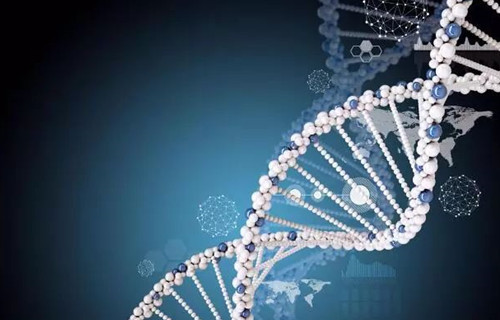DNA从父母传给孩子。它被称为DNA的“垂直转移”。那么你知道还有一种水平转移么,昆虫就是利用这种方式把DNA捐献给了其他物种。

You can thank your parents for your DNA. Because humans share genes through sexual reproduction, passing DNA from parent to child. It’s known as the ’vertical transfer’ of DNA. Now imagine if you could share just one or two bits of your DNA with an unrelated stranger, through a handshake, or other incidental contact—and that stranger inserted your DNA into their genome.
你要感谢你的父母给你的DNA。因为人类通过有性繁殖分享基因,把DNA从父母传给孩子。它被称为DNA的“垂直转移”。现在想象一下,如果你能与一个不相关的陌生人分享一个或两个你的DNA,仅通过握手、或其他偶然接触,就能使陌生人把你的DNA到加入到他们的基因组中。
No sex. No offspring either. That’s called the ’horizontal transfer’ of DNA. It’s obviously not how humans do it. But it’s a mainstay of single-celled organisms like bacteria, which use the process to share antibiotic resistance genes, for example. And now French scientists have found that horizontal DNA transfer could be a lot more common than we thought in multicellular organisms, too—insects, in this case. Because by analyzing 195 insect genomes, they found more than 2,200 cases of horizontal DNA transfer between unrelated species of flies and butterflies, beetles and wasps.
没有性别,也没有后代。这就是所谓的DNA 的“水平转移”。很明显,人类并不是这么做的。但它是单细胞生物如细菌的主要方式,在使用过程中分享抗生素抗性基因,例如,现在法国科学家发现,在多细胞生物中,水平基因转移可能比我们想象的更常见。很多昆虫也是采用这种方式,通过对195个昆虫基因组的分析,他们发现了超过2200例无亲缘关系的苍蝇和蝴蝶、甲虫和黄蜂之间的水平DNA转移。
That total quadruples the number of horizontal DNA transfers previously described in all animals, plants and fungi. The study is in the Proceedings of the National Academy of Sciences.
水平DNA转移数量总共4倍于先前描述到的所有动物,植物和真菌。这项研究结果发表在《美国国家科学院院刊》上。
How exactly this genetic transfer happens is still a mystery. Might be viruses, or parasites, doing the DNA delivery. But whatever the cause, it suggests that the evolution of insects, on a molecular level at least, may be something more of a shared success story.
这种基因转移究竟是如何发生的仍是个谜。或许是病毒或寄生虫做的DNA传递。但不管是什么原因,它表明,昆虫的进化,至少在分子水平上,可能是一个共享成功的故事。







